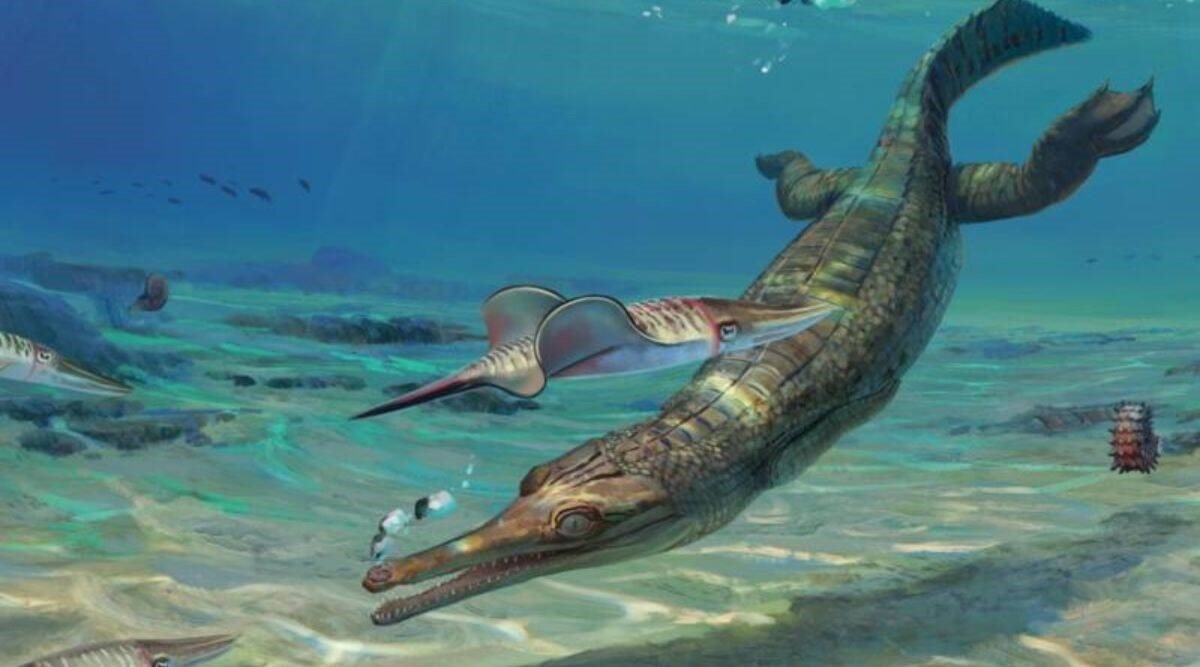Geography
In News: Scientists have uncovered a new thalattosuchian—an ancient “cousin” of modern-day crocodiles—which could be the oldest of its kind ever discovered.
Thalattosuchian

- It is an ancient “cousin” of modern-day crocodiles—which could be the oldest of its kind ever discovered.
- The fossils uncovered on the Jurassic Coast in the United Kingdom include part of the head, backbone, and limbs of Turnersuchus hingleyae.
- Due to their relatively long, slender snouts, it is likely that they would have looked similar to the currently living gharial crocodiles.
- Gharial crocodiles are usually found in the major river systems of Northern India.
- Though thalattosuchians’ skulls looked similar to gharial crocodiles, they were constructed differently.
- The region of the skull housing jaw muscles was particularly large in the species, suggesting that they had enlarged jaw muscles that made fast bites possible.
- This would have been useful considering that most of their prey were probably fast-moving fish and cephalopods like squids and octopuses.
- The newly-discovered fossils of Turnersuchus hingleyae represent the only complete Thalattosuchian of its age and date back to the early Jurassic, Pliensbachian period, which was about 185 million years ago
- Thalattosuchians and other crocodile-like animals could have originated around 15 million years farther than Turnersuchus.
- No expedition has found Thalattosuchians in Triassic rockets yet, which means that there is a ghost lineage. This means there is a group that existed, but they do not yet have fossil evidence.
- Until the discovery of the latest fossil, this ghost lineage extended from the end of the Triassic period till the Toarcian period. But now, it has been reduced by a few million years.
Source: Indian express












